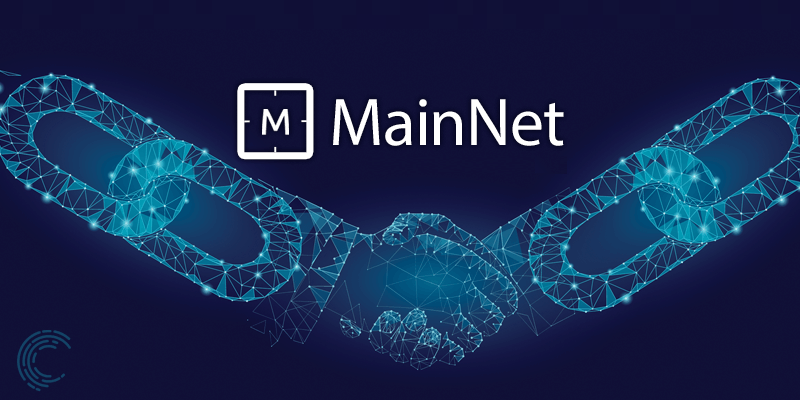A mainnet is the live and operational version of a blockchain protocol or cryptocurrency network where actual transactions occur and digital assets are transferred. It is the fully functional version of a blockchain network that is open to the public for use.
Here are some common ways users can interact with a mainnet:
1. Wallets:
Users can use cryptocurrency wallets that are compatible with the specific blockchain's protocol to send, receive, and store digital assets on the mainnet. Wallets may come in different forms, such as software wallets, hardware wallets, web wallets, or mobile wallets, and provide interfaces for managing private keys, signing transactions, and interacting with the blockchain network.
2. Nodes:
Users can run full nodes or partial nodes on the mainnet, which are software applications that validate transactions and maintain a copy of the blockchain's ledger. Running a node allows users to participate in the blockchain's consensus process, verify transactions, and contribute to the network's decentralization.
3. Smart Contracts:
If the blockchain supports smart contracts, users can interact with smart contracts on the mainnet using the appropriate programming languages or scripting languages supported by the blockchain's protocol. Smart contracts are self-executing agreements that can be programmed to perform certain actions based on predefined conditions and can enable various functionalities such as decentralized applications (dApps), token creation, and automated processes.
4. DApps:
Users can interact with decentralized applications (dApps) built on top of the mainnet, which are typically web or mobile applications that run on a blockchain network. dApps can offer various services or functionalities, such as financial services, gaming, social media, and more, and users can interact with them using compatible wallets or interfaces.
5. Transactions:
Users can send and receive digital assets on the mainnet by creating and signing transactions using compatible wallets or other software applications. Transactions typically involve specifying the recipient's address, the amount of digital assets to be transferred, and transaction fees, and are broadcasted to the blockchain network for validation and inclusion in the blockchain's ledger.
6. Consensus Participation:
Some blockchains require users to participate in the consensus process, such as proof-of-stake (PoS) or delegated proof-of-stake (DPoS) blockchains, where users can stake their tokens, vote for validators or block producers, and participate in the block validation process.
7. Other Interactions:
Depending on the specific blockchain's features and functionalities, users may have other ways to interact with the mainnet, such as participating in governance proposals, voting on network upgrades, or contributing to the development of the blockchain project.

Using a mainnet of a blockchain network comes with several risks that users should be aware of. These risks include:
1. Security Risks:
Mainnets are vulnerable to various security risks, including potential hacks, exploits, and vulnerabilities in the blockchain's protocol, smart contracts, or other software applications. These security risks can result in the loss of digital assets, compromise of private keys, and other security breaches.
2. Transaction Risks:
Transactions on a mainnet are irreversible, meaning that once a transaction is confirmed and included in the blockchain's ledger, it cannot be reversed. Users need to ensure they are sending transactions to the correct addresses and verifying transaction details before confirming them to avoid sending digital assets to the wrong recipients or losing funds due to user error.
3. Regulatory Risks:
Mainnets may be subject to regulatory scrutiny and compliance requirements, which can vary by jurisdiction. Users need to understand the regulatory landscape of the blockchain network they are using and comply with applicable laws and regulations, including tax laws, anti-money laundering (AML) regulations, and others.
4. Technology Risks:
Blockchain technology is still relatively new and rapidly evolving, and mainnets may have limitations, bugs, or other technical issues that can impact their functionality and security. Users should be aware of the specific blockchain's technical risks, such as scalability, interoperability, and consensus mechanisms, and understand their implications.
5. Market Risks:
Mainnets are typically associated with digital assets, such as cryptocurrencies, which are subject to market volatility and price fluctuations. Users should be aware of the risks associated with digital asset investments, including potential loss of value, lack of liquidity, and market manipulation.
6. Operational Risks:
Users may face operational risks when using a mainnet, such as issues with wallets, nodes, or other software applications, and human error in managing private keys or interacting with the blockchain network. These operational risks can result in loss of digital assets, inability to access funds, or other operational disruptions.
7. Scam Risks:
Mainnets can be associated with scams, fraudulent schemes, and phishing attacks, where malicious actors attempt to deceive users into revealing their private keys, sending digital assets to fraudulent addresses, or falling victim to other types of scams. Users should exercise caution, follow best security practices, and be vigilant against potential scams.
